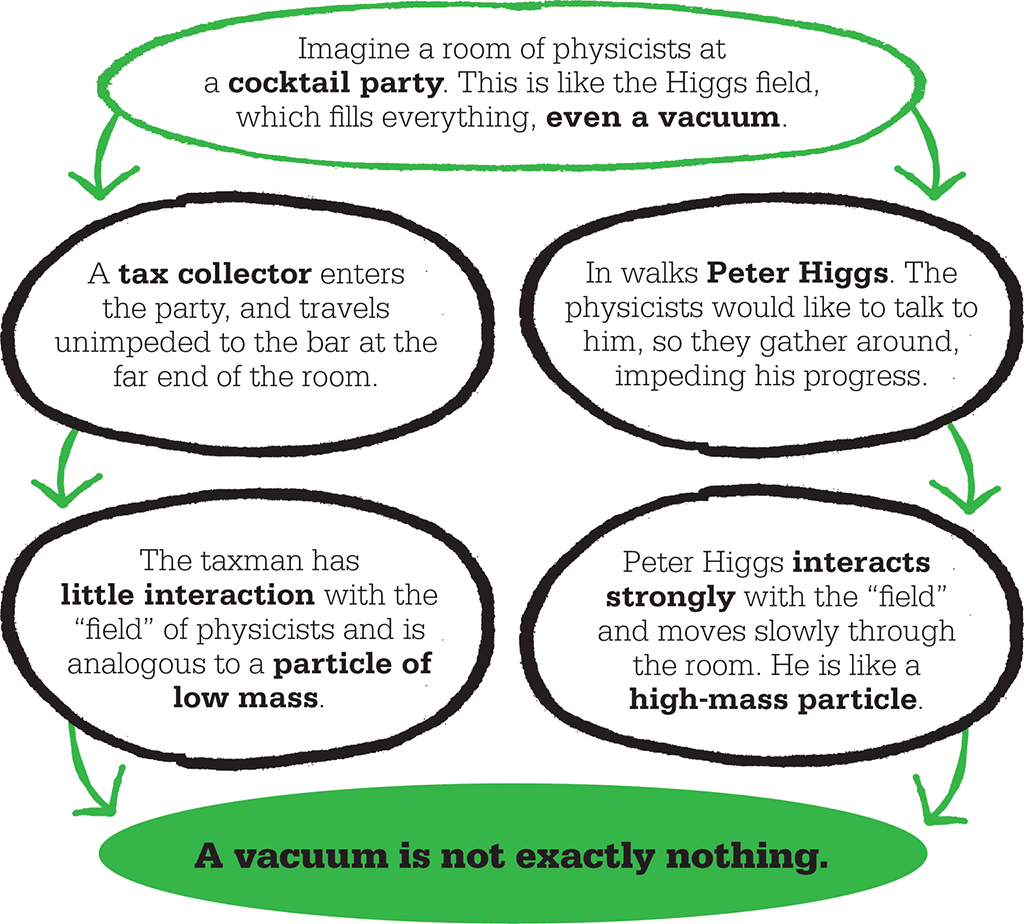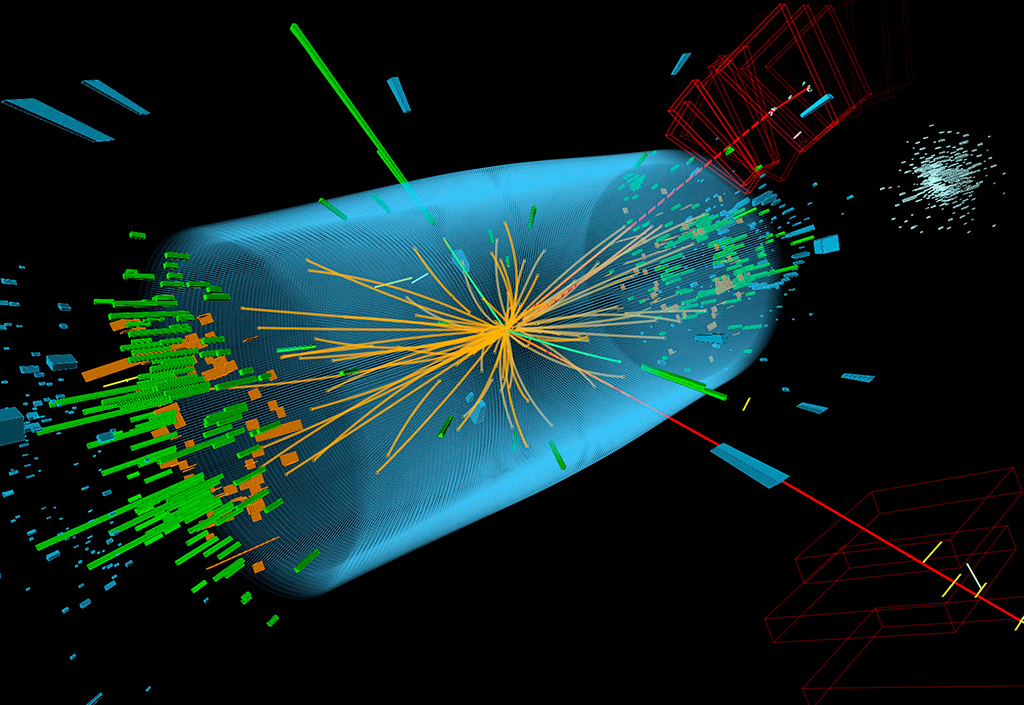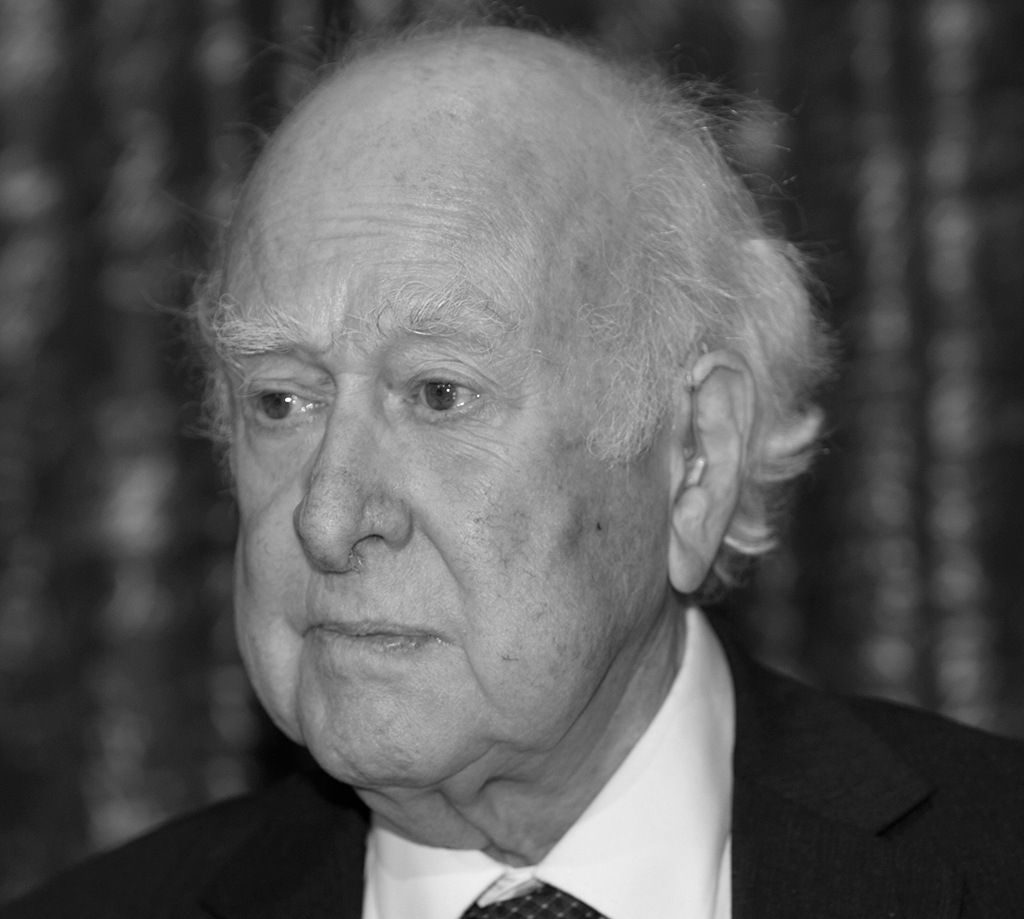
IN CONTEXT
Physics
1964 Peter Higgs, François Englert, and Robert Brout describe a field that gives mass to all elementary and force-carrying particles.
1964 Three separate teams of physicists predict the existence of a new massive particle (the Higgs boson).
1966 Physicists Steven Weinberg and Abdus Salam use the Higgs field to formulate the electroweak theory.
2010 CERN’s Large Hadron Collider reaches full power. The search begins for the Higgs boson.
2012 Scientists at CERN announce the discovery of a new particle matching the description of the Higgs boson.
The great scientific event of 2012 was the announcement from scientists at the Large Hadron Collider (LHC) at CERN in Switzerland that a new particle had been found, and that it might be the elusive Higgs boson. The Higgs boson gives mass to all things in the Universe, and is the missing piece that completes the standard model of physics. Its existence had been hypothesized by six physicists, among them Peter Higgs, in 1964. Finding the Higgs boson was of fundamental importance because it answered the question “why are some force-carrying particles massive while others are massless?”

Fields and bosons
Classical (pre-quantum) physics imagines electrical or magnetic fields as continuous, smoothly changing entities spread through space. Quantum mechanics rejects the notion of a continuum, so fields become distributions of discrete “field particles” where the strength of the field is the density of the field particles. Particles passing through a field are influenced by it via exchange of “virtual” force-carrying particles called gauge bosons.
The Higgs field fills space – even a vacuum – and elementary particles gain mass by interacting with it. How this effect occurs can be explained by analogy. Imagine a field covered in thick snow that skiers and people in snowshoes must cross. Each person will take more or less time, depending on how strongly they “interact” with the snow. Those that glide across on skis are like low-mass particles, while those that sink into the snow experience a greater mass as they travel. Massless particles, such as photons and gluons – the force-carriers of the electromagnetic and strong nuclear forces respectively – are unaffected by the Higgs field and sail straight through, like geese flying over the field.

The Higgs boson destroys itself within trillionths of a second of being born. It is created when other particles interact with the Higgs field.
The hunt for the Higgs
In the 1960s, six physicists, including Peter Higgs, François Englert, and Robert Brout, developed the theory of “spontaneous symmetry breaking”, which explained how the particles that mediate the weak force, the W and Z bosons, are massive, while protons and gluons have no mass. This symmetry breaking was crucial in the formulation of the electroweak theory. Higgs showed how the Higgs boson (or rather the decay products of the boson) should be detectable.
The search for the Higgs boson spawned the world’s largest science project, the Large Hadron Collider – a giant proton collider with a 27-km (17-mile) circumference, buried 100m (300ft) underground. When running full tilt, the LHC generates energies similar to those that existed just after the Big Bang – enough to create one Higgs boson every billion collisions. The difficulty is spotting its traces among a vast shower of debris – and the Higgs is so massive that, on appearing, it decays instantly. However, after nearly 50 years of waiting, the Higgs has finally been confirmed.
PETER HIGGS

Born in Newcastle-upon-Tyne, England, in 1929, Peter Higgs took undergraduate and doctoral degrees from King’s College, London before joining the University of Edinburgh as a Senior Research Fellow. After a stint in London, he returned to Edinburgh in 1960. Walking in the Cairngorm Mountains, Higgs had his “one big idea” – a mechanism that would enable a force field to generate both high-mass and low-mass gauge bosons. Others were working along similar lines, but we talk of the “Higgs field” today, rather than the Brout–Englert–Higgs field, because his 1964 article described how the particle could be spotted. Higgs claims to have an “underlying incompetence” as he did not study particle physics at PhD level. This handicap did not stop him from sharing the 2013 Nobel Prize in Physics with François Englert for their work in 1964.
Key works
1964 Broken Symmetry and the Mass of Gauge Vector Mesons
1964 Broken Symmetries and the Mass of Gauge Bosons
See also: Albert Einstein • Erwin Schrödinger • Georges Lemaître • Paul Dirac • Sheldon Glashow